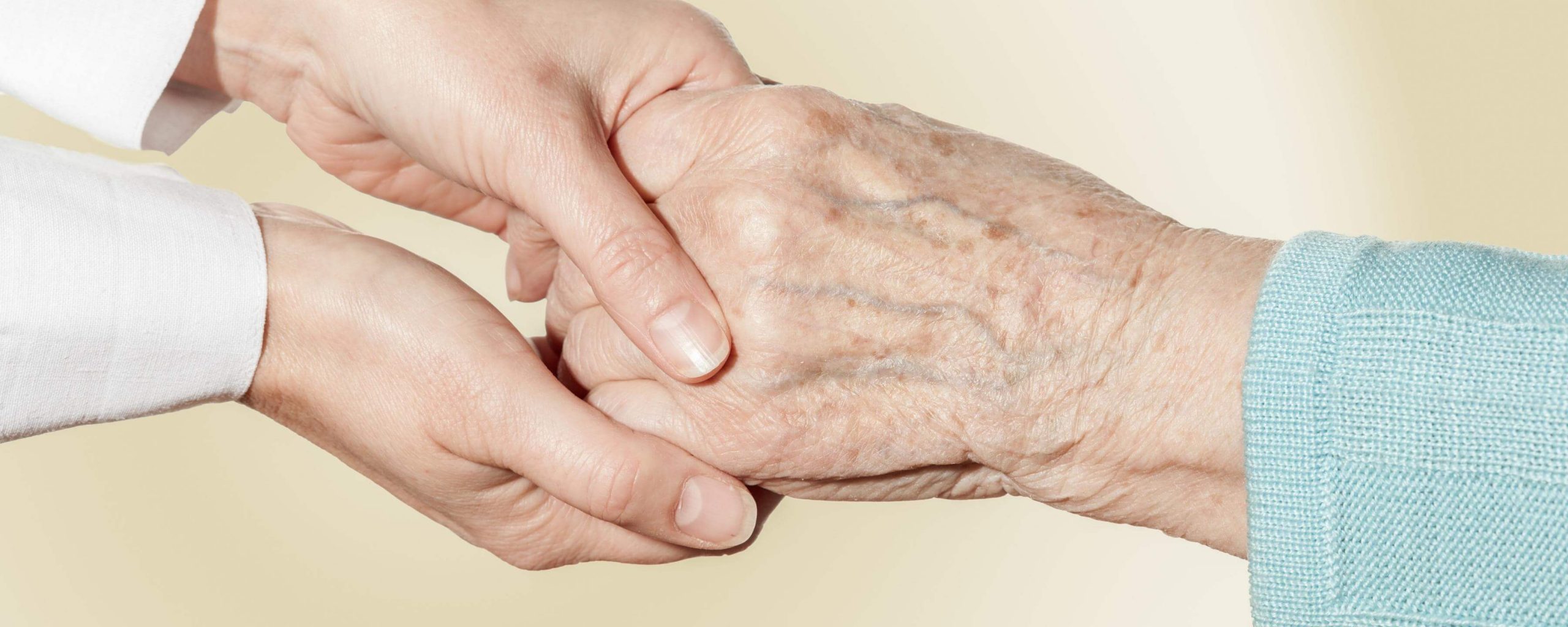Identifying the Signs of Nursing Home Abuse
Breit Biniazan—October 21, 2022

Residents of nursing homes are among the most vulnerable to all categories of abuse: physical, mental, and emotional. Sadly, nursing home abuse is an incredibly underreported crime.
Studies report that up to 1 in 3 nursing home residents suffer some type of abuse from their caregivers, though the true figure is estimated to be higher.
Shame, cognitive decline, and fear of retaliation can all lead seniors to hide the signs of abuse, even from those they’re closest to.
Knowing more about the subtle symptoms of abuse can help you recognize when a loved one may be silently suffering. After reading this blog, you’ll know the seven types of nursing home abuse and their signs.
By being able to better identify each one, you’ll have the confidence to recognize the signs of abuse in a loved one.
The Seven Types of Nursing Home Abuse
- Abandonment
- Neglect of Basic Needs
- Self-Neglect
- Emotional Abuse
- Financial Exploitation
- Physical Abuse
- Sexual Assault
Abandonment
Abandonment is a form of physical and emotional abuse of a vulnerable nursing home resident. It occurs whenever a caregiver neglects or deserts a resident without ensuring that they’ll be taken care of.
Some examples include:
- Leaving a shift without communicating the resident’s status to another staff member
- Leaving the resident somewhere in the nursing home other than their room
- Failing to respond to the resident’s calls for help
- Failing to properly administer medication
- Failing to attend to the resident’s basic needs, including feeding, dressing, and grooming
Abandonment can be a difficult type of abuse to spot since family members and visitors are unlikely to directly witness a nursing home employee neglecting or abandoning their loved one.
Identification tips
Identifying abandonment may involve circumstantial evidence. Be on the lookout for any of these signs:
- Bedsores, which can indicate the resident isn’t being moved frequently enough
- an unkempt or disheveled appearance, including unbrushed hair or soiled clothing
- Being unsuitably dressed for the weather
- Injuries like broken bones, which can occur when the resident falls while trying to get out of bed
- Unexplained weight loss, which can be a sign the resident isn’t getting help with feeding
- Sudden mood changes, especially seeming more depressed, confused, or withdrawn
Abandonment, neglect, and self-neglect can often go hand-in-hand.
Neglect of Basic Needs
Nursing home residents often depend on staff to provide them with essential nutrition, assist them with the activities of daily living (including dressing, toileting, and feeding), administer medication, and even help them in and out of bed.
When nursing home staff fail to meet these basic needs, the resident can quickly be at risk of physical harm.
Identification tips
Some of the most common symptoms of neglect include dehydration, bedsores, and broken bones. Be on the lookout for these signs:
- Complaints of unquenchable thirst
- Few or no tears while crying
- A dry, sticky mouth
- Dark-colored urine
- Infrequent urination
- A rash in the resident’s genital area
- Unexplained tiredness
- Confusion
- Complaints of feeling dizzy or lightheaded
- Unwillingness to get out of bed
- Unexplained bruises
Any of these signs alone can be a red flag, but a combination of several of these symptoms can be a clear indication that your relative isn’t getting the level of care they need.
Self-Neglect
This type of abuse occurs when the nursing home staff doesn’t adequately care for a resident who can no longer care for themselves.
Identification tips
Signs that self-neglect is happening include:
- Checks that go uncashed
- A dirty or unkempt room
- Food that is left uneaten for hours
- Untreated sores
- Soiled or messy clothing
If you observe any of these signs in your loved one, it can be an indication they need more direct care and attention than they’re receiving.
Emotional Abuse
This type of abuse involves the deliberate infliction of anguish, distress, or pain on a resident through verbal or non-physical acts.
Emotional abuse may include:
- Verbal assaults
- Insults
- Threats and intimidating statements
- Humiliation
- Isolation
- Verbal harassment
Emotional abuse can be hidden and insidious. Many victims of this type of abuse may be reluctant to report it due to fear of escalation or retaliation from the abuser.
Identification tips
Some indications your loved one may be the victim of emotional abuse include:
- Increased agitation – speaking more quickly, pacing or rocking back and forth, darting eyes, jumping or startling easily
- Avoiding eye contact
- Confusion
- Flinching or cowering while around certain employees
- Mumbling
- Sucking their thumb
Some of the signs of emotional abuse can mimic the earliest signs of dementia.
Financial Exploitation
Each year, financial abuse costs its elderly victims more than $36 billion. This type of abuse includes both direct theft and financial manipulation.
In the worst situations, the abuser may even be able to coerce the elderly victim into changing their designated power of attorney (POA) or amending their will to benefit the abuser.
Identification tips
Some signs of financial abuse or exploitation include:
- Missing cash or valuables, including jewelry
- Giving excessive “gifts” to caregivers
- Unusual changes in spending behavior
- Unexplained loans or bank withdrawals
- Changing the subject whenever finances are brought up
- Recorded changes in the power of attorney, life insurance policies, or credit cards
Similar to other types of abuse, financial abuse is often underreported due to the victims’ feelings of guilt and shame.
Physical Abuse
Physical abuse in this setting often occurs when residents suffer bodily harm or physical pain as a direct result of maltreatment or neglect.
Older people can be more vulnerable to falls and other injuries, which can make physical abuse tough to spot.
It’s important to always be vigilant whenever your loved one has a new injury, especially one they can’t easily explain.
There are three types of physical abuse in nursing homes: active abuse (pushing, shoving, kicking, etc.), misuse of restraints, and neglect.
Identification tips
Signs that physical abuse is happening may include:
- Broken bones and fractures
- One study indicated that patients who suffered fractures of the back, head, or face were more likely to have experienced physical abuse than patients with fractures in their arms, legs, hips, or other areas
- This study also found that abuse was more likely when the patient suffered a fracture from an injury that wasn’t a fall
- Frequent complaints of physical pain
- Signs of restraint, like rope marks or finger-shaped bruises
- Broken eyeglasses that aren’t quickly replaced
- Flinching or jumping when a caregiver enters the room
It’s important to note that potential physical abusers in nursing homes may include not only the caregivers but also visiting family members or other residents.
Sexual Assault
Sexual assault is one of the most emotionally and physically harmful types of abuse any nursing home resident can suffer.
It involves non-consensual sexual contact by an abuser upon a resident, often through deception, manipulation, or use of force.
Those with dementia or memory issues are at especially high risk of sexual abuse or assault, and this abuse can be committed by either nursing home employees or by fellow residents.
Identification tips
Some signs of sexual abuse may include:
- Bruising on the inner thighs, genitals, or breasts
- Unexplained urinary tract infections (UTIs)
- Complaints of genital itching or burning
- Complaints of bleeding, pain, or irritation in the genital or anal area
- Discomfort sitting or walking
- Torn, stained, or bloody underwear
- Withdrawal from social situations
- Panic attacks
- Sudden or unexplained changes in behavior
- Sleep disturbances
- Anxiety or excessive fear
- An increase in aggressive behaviors
- New or sudden confusion, which can be a sign of a UTI
As with other types of abuse, even one of these symptoms may be a red flag—more than one deserves serious attention and a thorough investigation.
Fight Back Against Nursing Home Abuse
If you suspect that your loved one is being victimized, there are a few important steps to take:
- Ensure that the resident is safe and their immediate needs are being met
- Report the abuse to the nursing home administrator
- If the resident has suffered physical harm, call 911 and seek medical attention
- Contact your state’s nursing home licensing and certification agency
- Call Adult Protective Services to make a report
- Contact your state or local long-term care ombudsman
Reporting the abuse through official channels can not only help your loved one, but can also protect other vulnerable residents from physical, emotional, and financial harm.
If your loved one has suffered harm as a result of nursing home abuse or neglect, the experienced nursing home abuse attorneys at Breit Biniazan can work to hold your abusers accountable.
Give us a call at (855) 212-8200 or contact our personal injury lawyers online to schedule your consultation.

By Courtney Sweasy
Marketing Director

Categories:
Office Locations
Related Posts
Categories
We are personal injury attorneys
Fill out our contact form to speak to our experienced Virginia trial attorneys. Breit Biniazan has helped recover millions of dollars in cases. Learn how we can help you today.